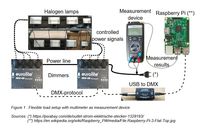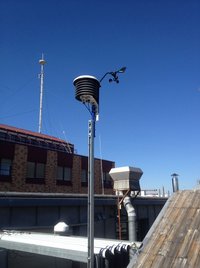
Weather Station Data Plausibility
An email notifier has been set up for the weather station on the roof to notify the responsible administrator in the event of a malfunction in the connection to the server. In addition, a data plausibility check and an I2C bus scan allow the detection of interrupted data connections and defective sensors. The weather station has been extended with a watchdog, which indicates possible problems and restarts the controller in the event of an error. To improve the overall view of the code of the weather station, it was extensively commented by Doxygen and small improvements within the code were made.
SHS Flexible Load
The Smart Home Simulator is equipped with a PV system, a lithium-ion battery and several sockets for household loads. However, extensive testing of interesting scenarios requires a flexible and controlable load.
To improve the longevity of halogen lamps, an algorithm has been implemented on a Raspberry Pi that dimms and controls the lamps and adapts them dynamically to a given household load profile. Through research, several specific tests and measurements, the optimal operating modes for halogen lamps were developed.
Smart Heating Algorithm over OpenHAB
For optimum control over heating, cooling and ventilation (HVAC) and consequently a saving of carbon dioxide a balance of energy saving and comfort of the residents is required. An algorithm has been developed which does not require complicated comfort models or sensors and only requires simple user inputs such as "hot", "cold" or "comfortable". In addition, the developed algorithm ensures optimum temperature in rooms with multiple people and allows energy savings by adjusting the indoor temperature to the outside temperature. The data measured over a year showed 60% energy savings through adaptive HVAC compared to conventional heating.
Sensor Network Installation and Testing
An indoor and wireless weather station powered by PV has been designed, installed and tested. The station measures two of the most important parameters for an automation of thermal comfort in emerging smart buildings: air temperature and the relative humidity. This parameters are transmitted to the reciever station through a radio frequenzy transmitter. Therefore the Smart Energy Management is able to optimize the energy consumption by controling the heating system. The system for temperature and humidity measurement was optimized to curb low-power for radio communication and sensors allowing these nodes to run for extended periods of time on a PV cell with a small lithium-ion battery.
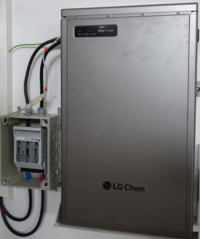
Power Control Mechanism for a Battery
The communication between decision making units and actuators is a crucial part of energy management systems. Therefore, the communication interface between the control algorithm and the battery inverter of our smart home simulator has been defined and implemented. The results show that the state of charge of the battery is following the desired charging and discharging behaviour.
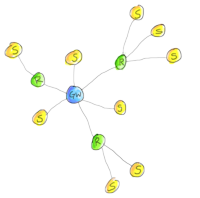
MySensors Network
A MySensors network has been established in order to transmit measured data within a building across distances that usually can't be maintained between standard transmitters and receivers. However, this network includes so-called repeater nodes which receive data and forward it along a chain of repeaters to a data gateway where all measurement data is gathered. The functionality of the MySensors library has been successfully tested.
Thermal Load measurements via Sensors Network
In order to measure and evaluate the thermal loads of a building and in order to adapt its heating and cooling accordingly a senesor network was built to measure the temperature and humidity in every room of the IfE facility. Therefore an Arduino UNO with ethernet shield was connected to three temperature sensors. The sensors were also calibrated. Furthermore the hot water flow rate via an external ultrasonic flow sensor was measured.
Thermal Based EMS
Smart energy management systems are widely spread for both the electrical and thermal side of a smart home. Within this task, a literature research on available technologies of thermal control of smart home systems was conducted and a test bed was built in order to evaluate the devices managing the thermal system of the smart home such as Tadoo and Nest.
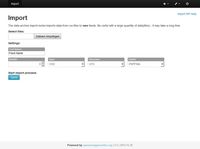
EmonCMS Database System Improvement
A data acquisition system based on EmonCMS has been setup to acquire data from all the project devices. Within this task, the system was improved by allowing now multiple data formats to be imported into and exported from the system, developing multiple data plotting algorithms and enabling group administration within the system.
Energy Monitoring of a Mobile Scooter
The energy relevant data of the institute’s scooter was so far stored on an SD-Card in the scooter. The upload and visualization had to be started by hand. In this project, the scooter data logging system was improved regarding the user-friendliness. Within this task a LCD display was integrated to show the live consumption of the scooter and a base station to store the data and make it usable for further usage.
Charging algorithms and ISO 15118
Charging electric vehicles may increase peak load in electricity grids. In order to avoid blackouts but also to increase the share of renewables in the mobility sector smart charging is required. The ISO15118 provides a communication protocol for electric vehicles and charging stations to exchange information. Based on this information the charging station is able to take smart charging decisions.
Within this task a configuration of the SmartUP charging station and a virtual electric vehicle communicating via ISO 15118 was done and a charging algorithm with Python and Pyomo was implemented. Furthermore the SmartUP data (PV-Forecast) and online data (EEX) were integrated. The system was then validated.
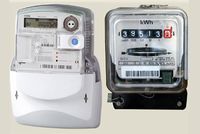
Source: http://www.konsument.at/bauen-energie/stromzaehler-smart-meter-318875415162
Smart Meter Gateway Review and Analysis
Smart meters are wide spreading on daily basis all over the globe. They are being used in different ways either as a postpaid or a prepaid meter. The communication signals between those smart meters and the utility are being transmitted in different ways. Within this task, it was required to setup a smart meter test bed with multiple smart meters within the lab, as well as the backend in order to analyze and evaluate the communication signals and measurements.
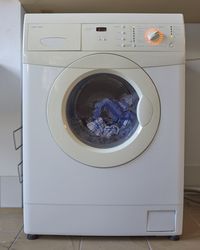
Smart devices test beds
Nowadays all devices in an household shall be interconnected. In order to verify and validate new algorithms and ideas for a smart interconnection a test bed for multiple possible smart devices shall be developed and built. Within this project a refrigerator, a freezer, a dishwasher and a washing machine shall be included.
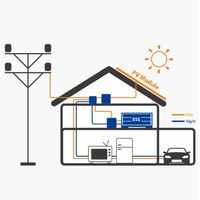
PV Battery Energy Management
The integration of PV systems within households has been increasingly significant through the continuous decrease of energy storage systems cost and the possibilities of its integration along with PV systems. Therefore enabling new ways of Demand Side Management (DSM). The intelligent integration of PV system and battery storage can improve self-consumption rates and grid stability. The goal behind this task was to develop a control algorithm that decides on charging and discharging times. The algorithm was evaluated and validated using SmartUP measured data.
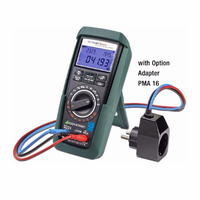
Source: gossenmetrawatt.com
Electrical Consumption of Smart Devices
A Smart Device is an electronic device, which is typically connected to other devices and performs its activities interactively or autonomously. In this project, the power consumption of smart devices developed in other SmartUP projects was measured and the corresponding impact on the current consumption and the related costs or savings were analyzed. Due to the strong quantitative increase of smart devices, a general increase in current consumption can be expected. The analysis of results showed is that these account for about 4%. The savings that can be achieved by Demand Side Management (load control or load shift) in combination with variable electricity rates are currently too low. Since smart devices also are more expensive than ordinary devices, a corresponding intelligent device would pay off only after several decades. By contrast, an intelligent room temperature control can reduce the need for heating to a much greater extent than the power consumed by smart devices.
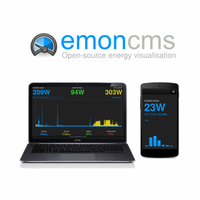
Emoncms Database Improvement
The energy sources with the highest potential for development, such as wind and solar energy, are associated with large daily and seasonal fluctuations. Energy storage with current technologies are associated with high-costs and losses, however, this problem can be compensated by an intelligent control system, which adjusts the power consumption to the respective own energy production. In addition to controlling and measuring energy consumption, a simple and understandable visual representations of the energy cariers is essential. For this, the open source platform EMONCMS was developed. The TUM department of Energy Economy and Application Technology has been using this platform for the data management of the SmartUP projects. The objective of this project is to improve the Emoncms platform by the implementation of three additional features: (1) Calculation algorithm in Emoncms for classifying the building energy rate, (2) My Energy System Application and (3) Import of csv in Emoncms.
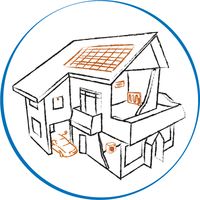
Daily Household Energy Prediction
A Smart Meter has been installed in a single-family house in Munich to monitor their own energy consumption. The goal behind this task is to develop an algorithm that is capable of predicting the daily overall energy consumption. The project was developed in Matlab and consists of two mains parts: (1) an optimization of the prognosis performed by the selection and weighting of the database variables and (2) the recognition of typical consumption patterns. The forecast was validated using two sets of data. In order to make a more precise statement and to improve the algorithm further, it is necessary to simulate various load profiles with a higher temporal resolution.
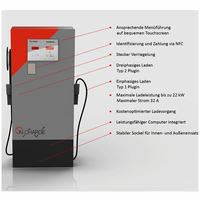
E-Vehicle Wallbox Optimization
A wallbox is used to charge electric vehicles but also to communicate information to a backend system which optimizes charging processes according to certain criteria. The main objectives of this project were (1) the improvement of the communication between wallbox and backend, and (2) the validation of the functionality of the charge control.
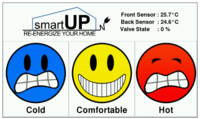
Smart Heating Algorithm for Residential Buildings
The N3815 Seminar room has been equipped with multiple temperature sensors, actuators, an occupancy camera and a feedback touch panel. The main goal behind this project is to use the available data out of these sensors in creating a proper heating algorithm. In order to achieve that, the current installed smart systems as well as the existent occupancy-based heating algorithm were reviewed and analyzed. anew algorithm was developed and implemented.
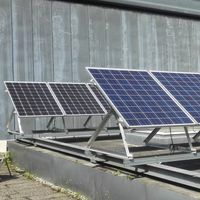
PV-Energy Monitoring and Prediction
The main objective of this project is to develop and implement an algorithm to predict the PV power production over at least one day to be used for Demand Side Management strategies. It should be easy to implement and to use, the costs for purchasing the required devices as well as for the use of the system should be low. Prediction results should be visualized in a way that it provides a good understanding of the predicted power flow to the user. For the course of the project a 3kW PV system which is installed on the N8 building is used. The resulting algorithm is based on a clear sky forecast method, it uses weather data from Meteoblue.com and Python on a Raspberry Pi.
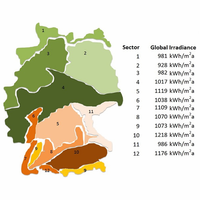
Net Present Value Calculator for Photovoltaic Systems in Germany
In this project, an excel tool is developed to calculate the NPV of an investment based on the expected energy production (Location and Orientation of the PV system), size of the PV system and related investment costs, feed in tariffs and further technical, legal and fiscal issues according to the present EEG-law in Germany. Energy production and the effects of location and tilt of the PV were discussed and explained in detail.

Scooter Battery Data Logger
Development of a battery monitoring unit for an existent scooter. To achieve that, the entire duration of the trip as well as the battery parameters such as the voltage of the four lead-acid batteries, the temperature and the current flow should be monitored. The recorded data is then automatically and wirelessly transmitted to a server after every ride and then evaluated online. The developed circuit is compact enough to be stored in the helmet compartment.
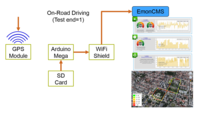
Scooter GPS Data Logger
Built up of a system to perform functions of measuring, analyzing positioning information and energy consumption of the electric-driven scooter. An Arduino Mega is used as the core controller on which a system of GPS receiver modules, current and voltage sensors are located. After every ride, the monitored data is uploaded and visualized on emoncms.

Smart Heating Systems Control
Development and implementation of a smart heating energy management system equipped with a camera and a touchscreen. The system is designed to meet the user preferences by allowing him/her to give feedback through the touchscreen. An installed camera helps to get an idea about the room occupancy. In this way, a smart energy management can be ensured based on the room occupancy and the user preferences. Also, connecting the smart system network with a calendar stating the room's next reservations would contribute to increasing the system efficiency.
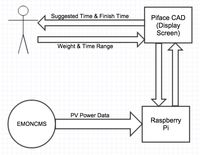
Washing Machine System Controller
System to fit the washing machine power curve to the available PV power curve. The start time is the key variable to make an efficient use of the PV energy. It is dependent on the particular day (amount of predicted PV power along the day), the weight of the clothes to wash and the time range set by the user. The system calculates the best time to turn on the mashing machine according to the input variables and it displays the finish time of the washing process.
